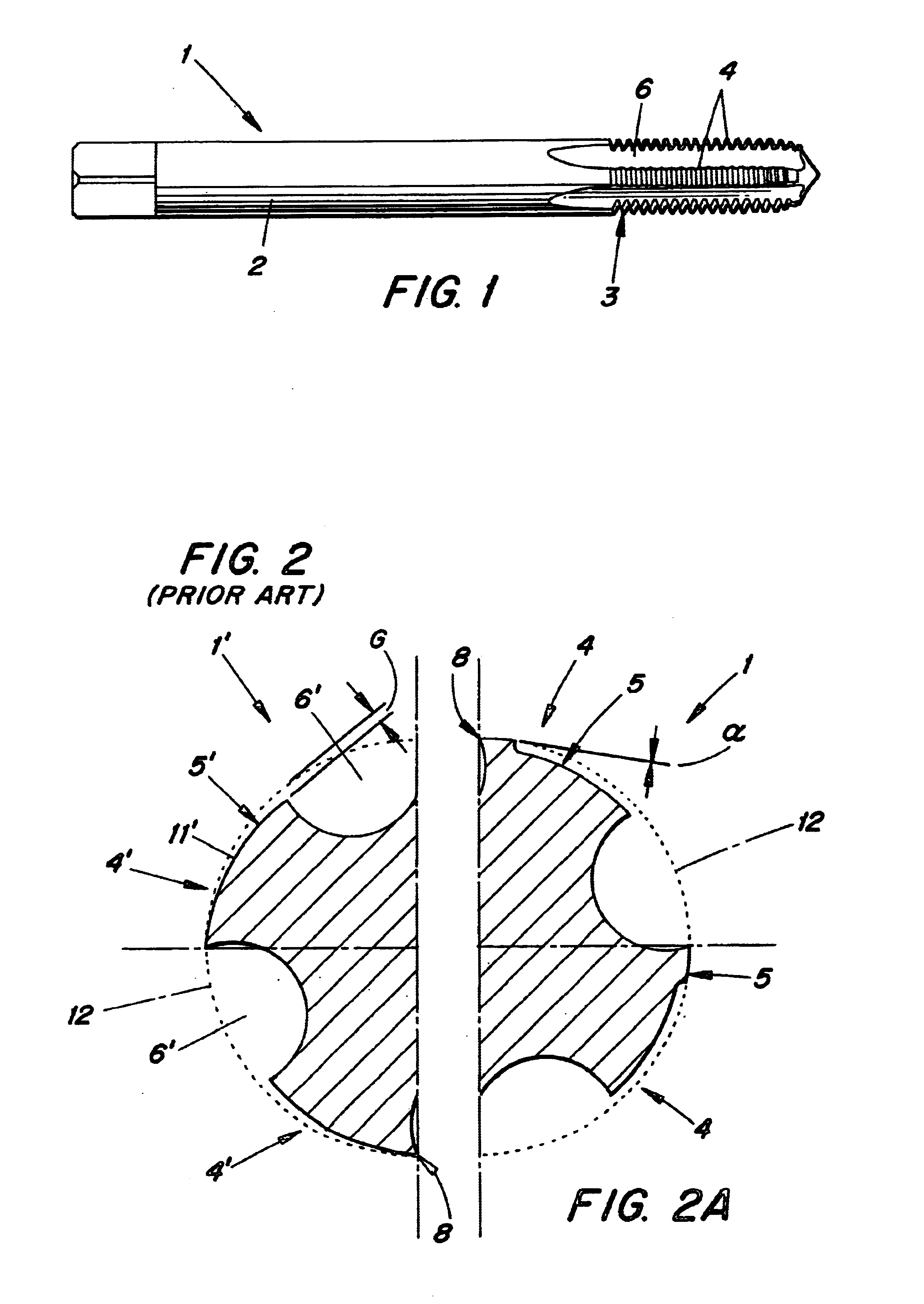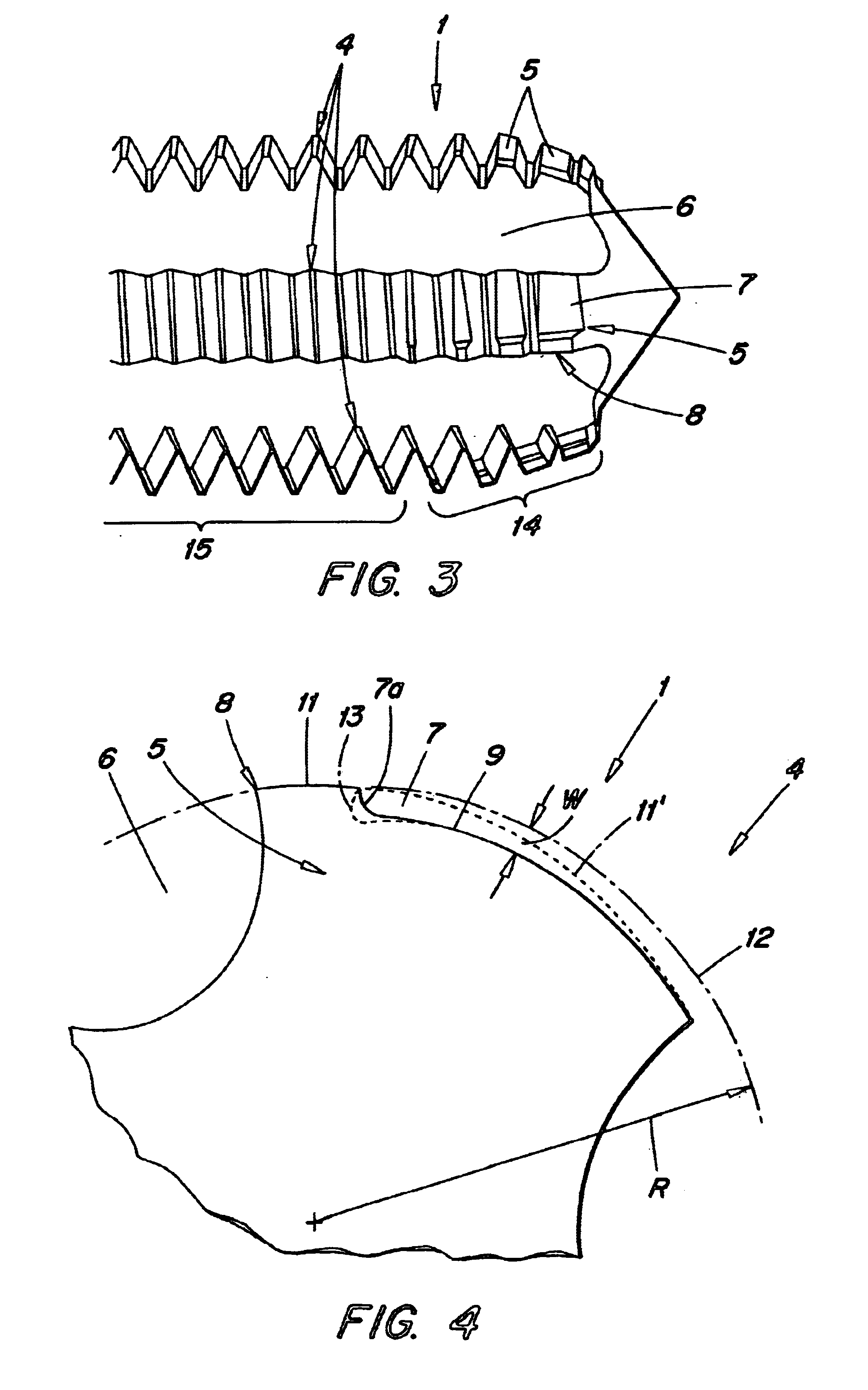Thread cutting tool having cutting teeth with stepped undercut flanks
a cutting tool and thread technology, applied in wood boring tools, forging/pressing/hammering apparatuses, forging/hammering/hammering machines, etc., can solve the problems of not being able to withstand the usual cutting force, and achieve the effect of avoiding the negative effect, avoiding and reducing the loss of cutting edg
- Summary
- Abstract
- Description
- Claims
- Application Information
AI Technical Summary
Benefits of technology
Problems solved by technology
Method used
Image
Examples
Embodiment Construction
[0027]FIG. 1 shows the thread cutting tool, generally designated 1, in the form of a screw tapping tool that is provided with a shaft 2 and a cutting portion 3. The shaft 2 in this case is shown as a simple cylindrical shaft, but can, however, be of any other shape according to how the corresponding chuck or clamping chuck of a machine tool is configured. The cutting portion 3 is provided with several cutter rows 4 that are each composed of a group of cutting teeth 5, and has grooves for chippings 6 in between. In the present case, the chipping grooves 6 and the cutter rows 4 or respectively groups of cutting teeth are on a relatively steep helical curve.
[0028]FIG. 2 is a cross-sectional view through the left half of a prior art thread cutting tool 1′, whereas FIG. 2a is a cross section through the right half of a thread cutting tool 1 according to the present invention.
[0029]FIG. 3 shows an enlargement of the cutting portion 3 according to the invention. The cutting portion 3 is di...
PUM
| Property | Measurement | Unit |
|---|---|---|
| radial depth | aaaaa | aaaaa |
| clearance angle | aaaaa | aaaaa |
| clearance angle | aaaaa | aaaaa |
Abstract
Description
Claims
Application Information
 Login to View More
Login to View More - R&D
- Intellectual Property
- Life Sciences
- Materials
- Tech Scout
- Unparalleled Data Quality
- Higher Quality Content
- 60% Fewer Hallucinations
Browse by: Latest US Patents, China's latest patents, Technical Efficacy Thesaurus, Application Domain, Technology Topic, Popular Technical Reports.
© 2025 PatSnap. All rights reserved.Legal|Privacy policy|Modern Slavery Act Transparency Statement|Sitemap|About US| Contact US: help@patsnap.com



